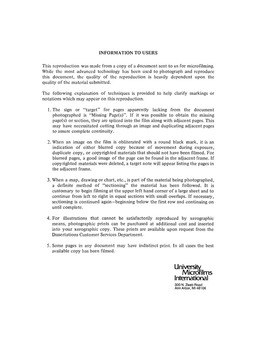| dc.contributor.author | Waikar, Avinash Madhukar, | en_US |
| dc.date.accessioned | 2013-08-16T12:29:18Z | |
| dc.date.available | 2013-08-16T12:29:18Z | |
| dc.date.issued | 1984 | en_US |
| dc.identifier.uri | https://hdl.handle.net/11244/5298 | |
| dc.description.abstract | Each trial consisted of a strength exertion of five seconds duration. Two standardized strength testing positions were used. These were the "Leg Lifting" and "Torso Lifting" positions commonly used in manual materials handling. | en_US |
| dc.description.abstract | The purpose of this research was to design a diagnostic technique to ascertain and monitor low back injuries involving symptomatic lumbar region disease. This was accomplished by employing strength testing of healthy and injured subjects performing maximal and submaximal strength exertions. | en_US |
| dc.description.abstract | There is no more persistent, widespread and costly problem in the working world and throughout all human society than that of a disabling backache. Based on a review of worker's compensation cases and epidemiological studies, the costs of low back injuries are staggering. A major factor contributing to the high cost is the number of employees who make false claims of back injury or who prolong back pain symptoms to retain compensation payments. Reliable procedures for making definitive judgements about such claims do not exist. | en_US |
| dc.description.abstract | The results indicated that the rate of strength build-up provides a reliable distinction between maximal and submaximal exertions. The coefficient of variation of the strength scores as a measure of variability in the repeated exertions did not indicate significant differences between the maximal and submaximal exertions. A measure derived by dividing the within-trial range by the strength score provided a distinction between the injured and the healthy groups. Discriminant analysis was employed with partial success in distinguishing between the three groups using the various derived measures of the force exertions. | en_US |
| dc.description.abstract | The approach used was to investigate differences in the rates of strength build-up and in the variability of the maintained exertions for three specific groups of subjects. The first group of healthy subjects performed maximal exertions. The second group of healthy subjects performed submaximal exertions. The third group consisted of symptomatic subjects with low back pain who performed safe maximal exertions. | en_US |
| dc.format.extent | x, 148 leaves : | en_US |
| dc.subject | Computer Science. | en_US |
| dc.title | The use of strength measurement as a diagnostic test for low-back injury / | en_US |
| dc.type | Thesis | en_US |
| dc.thesis.degree | Ph.D. | en_US |
| dc.thesis.degreeDiscipline | School of Industrial and Systems Engineering | en_US |
| dc.note | Source: Dissertation Abstracts International, Volume: 45-08, Section: B, page: 2610. | en_US |
| ou.identifier | (UMI)AAI8425551 | en_US |
| ou.group | College of Engineering::School of Industrial and Systems Engineering | |
